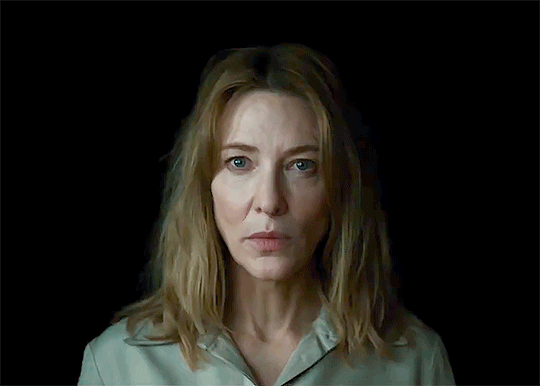
An exploration of the cult of personality, power imbalances and cancel culture, writer-producer-director Todd Field’s Tár provides a strong argument as to why the Academy Awards should include an Oscar for Best Casting among its myriad filmmaking accolades.
Tár stars Cate Blanchett (The Aviator, Blue Jasmine) as Lydia Tár, the groundbreaking conductor of a major German orchestra about to undertake both a book launch and a much-anticipated live performance of Mahler’s Fifth Symphony. Blanchett is joined by supporting cast members Noémie Merlant, Nina Hoss, Sophie Kauer, Julian Glover, Allan Corduner, and Mark Strong. Tár premiered at the Venice Film Festival to major acclaim, becoming an Oscar contender for both Blanchett and Hoss, who plays Sharin, Lydia’s partner and co-parent to their six-year-old adopted daughter, Petra (Mila Bogojevic). Distributed by Focus Features, Tár is currently in theaters and is anticipated to arrive on streaming platforms in early 2023.
Adam Nayman, in his review for The Ringer, writes, “Playing a world-renowned conductor holding court during a glitzy onstage interview sponsored by The New Yorker, Cate Blanchett is almost self-parodically in her element in Tár.
“Which is, of course, the point,” he continues, “If you’re going to write a character who’s famous for being preternaturally talented — a protégé of Leonard Bernstein, with homes in New York and Berlin, a spot on Alec Baldwin’s podcast, and an EGOT on her résumé — it makes sense to cast a phenomenally accomplished actress known for her poise and graciousness. Every time Blanchett’s Lydia Tár inhales to speak, on subjects ranging from musical composition to gender parity in the arts, she’s breathing rarefied air; when she calls room service for water, it sounds like an acceptance speech. The barbed and topical hook of Todd Field’s psychological thriller is whether the same electric brilliance that has elevated a person like Lydia so highly into the cultural firmament (and its adjoining tax bracket) is, or should be, enough to keep her there when she also secretly indulges in her more basic instincts.”
READ MORE: Meticulous Self-Destruction: The Cinematic Minefield of ‘Tár’ (The Ringer)
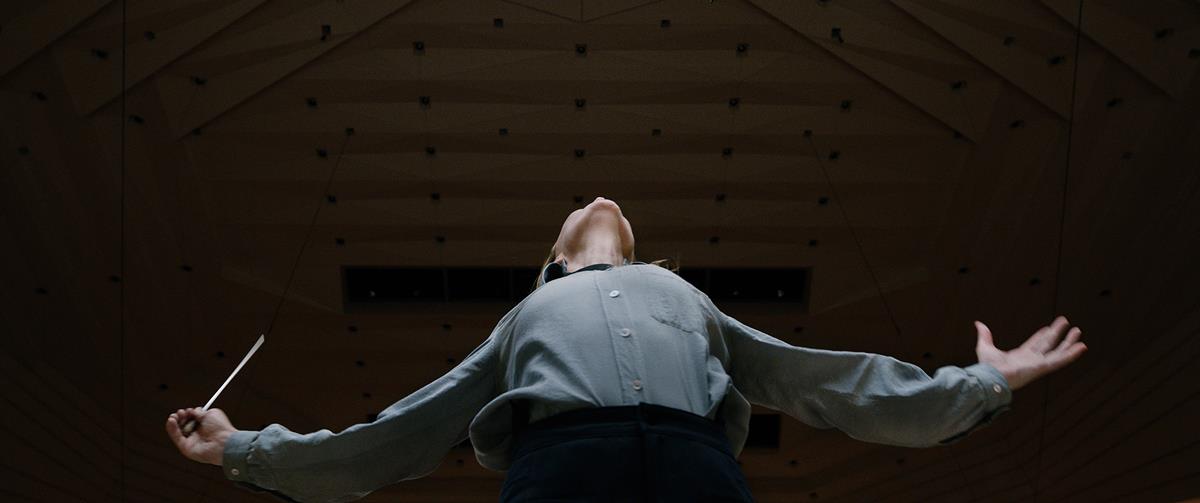
“This script was written for one artist, Cate Blanchett,” Field underscored in his director’s statement. “Had she said no, the film would have never seen the light of day. Filmgoers, amateur and otherwise, will not be surprised by this. After all, she is a master supreme.
“Even so, while we were making the picture, the superhuman skill and verisimilitude of Cate was something truly astounding to behold. She raised all boats. The privilege of collaborating with an artist of this caliber is something impossible to adequately describe. In every possible way, this is Cate’s film.”
Cinematographer Florian Hoffmeister, BSC employs long takes and intense close-ups to capture Blanchett’s portrayal of a complex character who is toppled from her pedestal, Variety’s Jazz Tangcay recounts.
Taking place in real time, the film’s opening sequence at The New Yorker Festival was intended to place the audience directly inside the room, Hoffmeister tells Tangcay. “After three minutes, you think you’re sitting there watching this event,” he says, adding that the idea was to avoid any camera movement. “We were just there. We didn’t try to guide the audience in terms of importance by panning. We were just there and it was about finding the right angle.”
Another long sequence that Hoffmeister identifies as crucial to setting the film’s tone features Lydia teaching at Julliard. The script for that scene, he reveals, was nearly 10 pages long.
“It’s her walking around the room, addressing the students, teaching and talking about her passion. But she’s also annoyed by this student and his political attitude towards music,” he explains.
“This is her true being. It fell to me to show the two elements. It was about giving Cate the chance to deliver an amazing performance and modulate the camera,” Hoffmeister continues. “She also becomes alive in that moment, because it’s so important to her; this is about her passion and her making music. From, a visual point of view, we could unleash the camera after having constrained it for so long.”
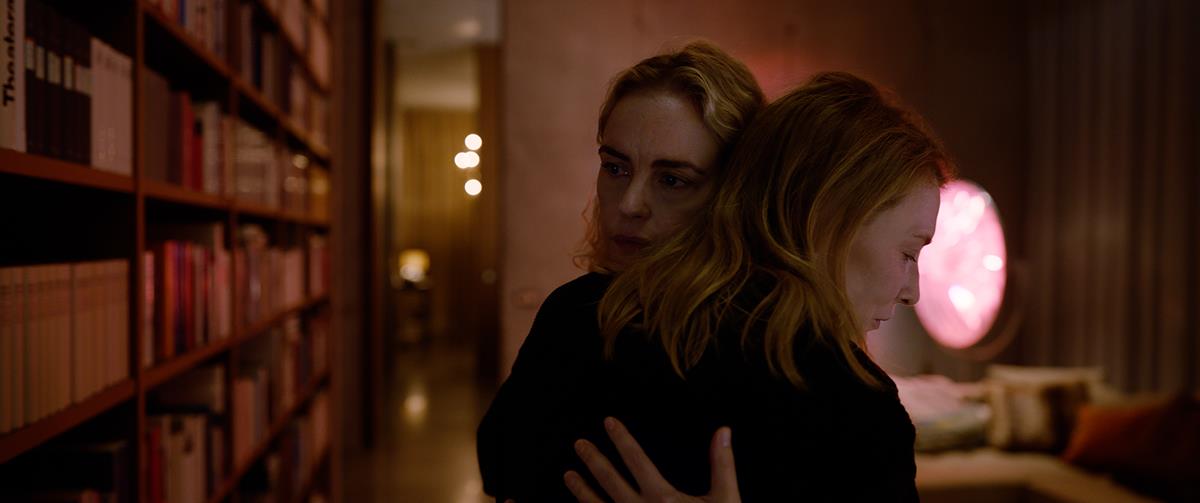
Following extensive testing to determine camera moves, Hoffmeister says the scene was achieved in one shot. To help make it an immersive experience, the DP and director worked closely on developing nuance. “We discussed whether we would do a close rendering of a face or a close-up and get closer to the person and film them. What are those differences?”
This collaboration with Field and Blanchett helped inform Hoffmeister’s approach to lighting and the development of a roadmap.
“She has two states of mind. One was about appearances such as what we see at the beginning of the film,” he says. “She’s catering to this narrative of what she thinks she is and what other people think she is.”
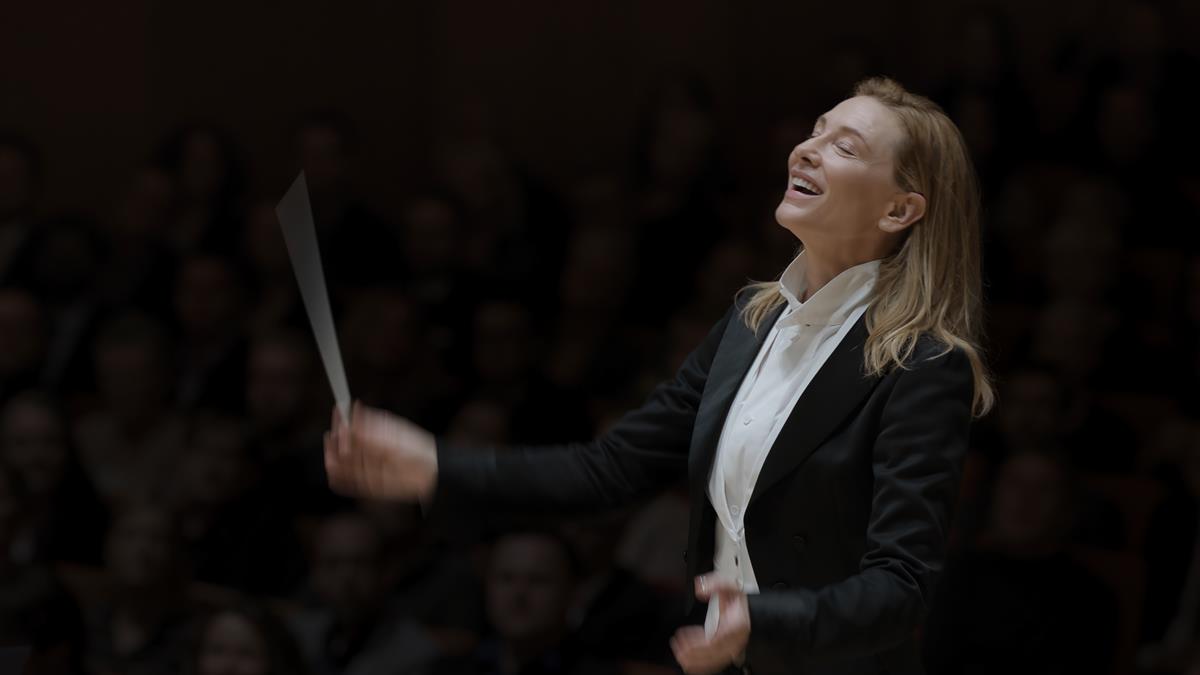
The second state of mind is Lydia’s private life away from the spotlight. “That’s when she is anxious, and the audience can observe some of those feelings where the narrative is unprotected in those moments when she is by herself or with her lover,” Hoffmeister says.
Sequences inside the orchestra hall were shot on location, which presented the cinematographer with a number of practical constraints, including creating enough brightness for the orchestra members to read sheet music by. There was sufficient light available for wide shots, but for close-ups, “it wasn’t so pleasing,” he said. “So, I went in and very subtly diffused the lights.”
READ MORE: ‘Tár’: How the Cinematographer Pulled Off Opening Sequence and Navigated Long Shots (Variety)
Field, who wrote, produced and directed Tár, is a somewhat elusive figure as a filmmaker. Tár is his first film in 16 years, and in the time since his previous films, the five-time Academy Award-nominated In the Bedroom (2001) and 2006’s Little Children, which garnered three Oscar nods, Field has had the perhaps unenviable position of starting and stopping several high-profile film and television projects, as Kyle Buchanan details in The New York Times.
“After his first two movies both drew Oscar nominations, he was hailed by critics as one of the best new American directors, but all attempts to mount a third project were stymied,” Buchanan says. “His film adaptations of the novels Blood Meridian, The Creed of Violence and Beautiful Ruins never made it into production, and though Field spent years working on a biopic of the deserting American soldier Bowe Bergdahl, co-writing a political thriller with Joan Didion, and scripting a huge Showtime series based on the Jonathan Franzen book Purity, those projects ultimately fell apart, too.”
Despite these many setbacks, Focus Features finally “called his bluff,” as Field recounts. “Focus went to extraordinary lengths once they read the script to say, ‘Yes, we want to make it. Let’s go.’ From the time the script was handed in to the time you saw it is less than two years, and in Hollywood, that’s like light speed.”
READ MORE: With ‘Tár,’ Todd Field Returns to Directing. Where Has He Been? (The New York Times)
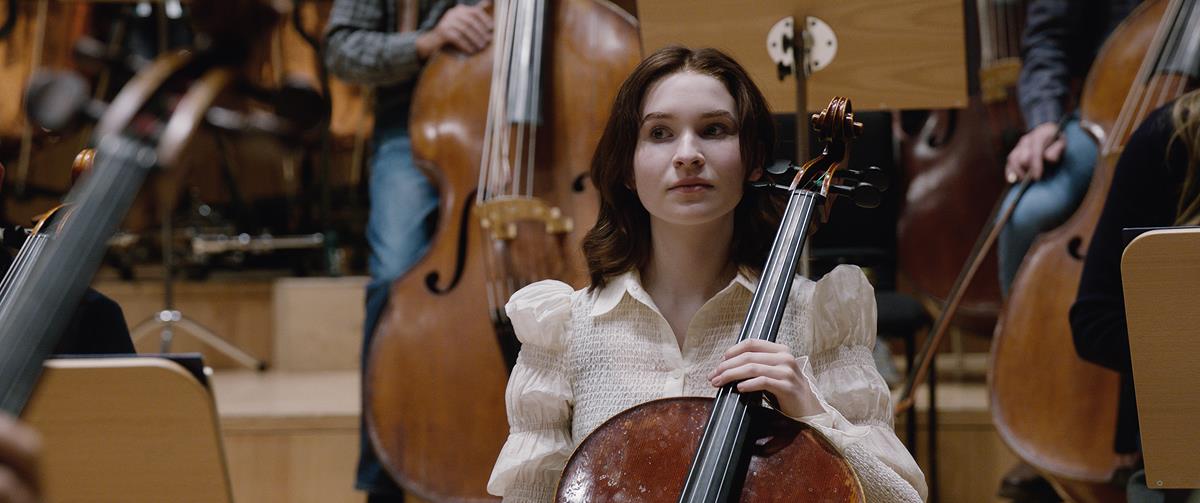
Field began his career as an actor, appearing in numerous film and TV projects including Victor Nunez’s Ruby in Paradise (1993), Nicole Holofcener’s Walking and Talking (1996), and Stanley Kubrick’s Eyes Wide Shut (1999), before entering film school at the AFI Conservatory. He described his journey from in front of the camera to writing and directing his own films in an interview with Rodrigo Perez for The Playlist.
“From the beginning, I wanted to make my own films,” he said. “Like I’m a highly technical director and the way that some people talk, people say, ‘Well, you were an actor, so you’re an actor’s director.’ Or, ‘You’re a writer because you write your own stuff.’ OK, sure, I wrote my own stuff because it was cheap. I couldn’t afford anyone else. But the truth is, the larger part of why I was interested in doing this has to do with cinema, and the films that I love, and photography and, how do we see things and what my point of view is. So, I don’t know if any of that has to do with anything in terms of like, why I made a film in 16 years or whatever, but I think that sometimes it’s jack of all trades, master of none kind of thing.”
READ MORE: ‘TÁR’: Todd Field Talks Working With Cate Blanchett, Lost Projects & Being OK With Never Directing A Feature Again (The Playlist)
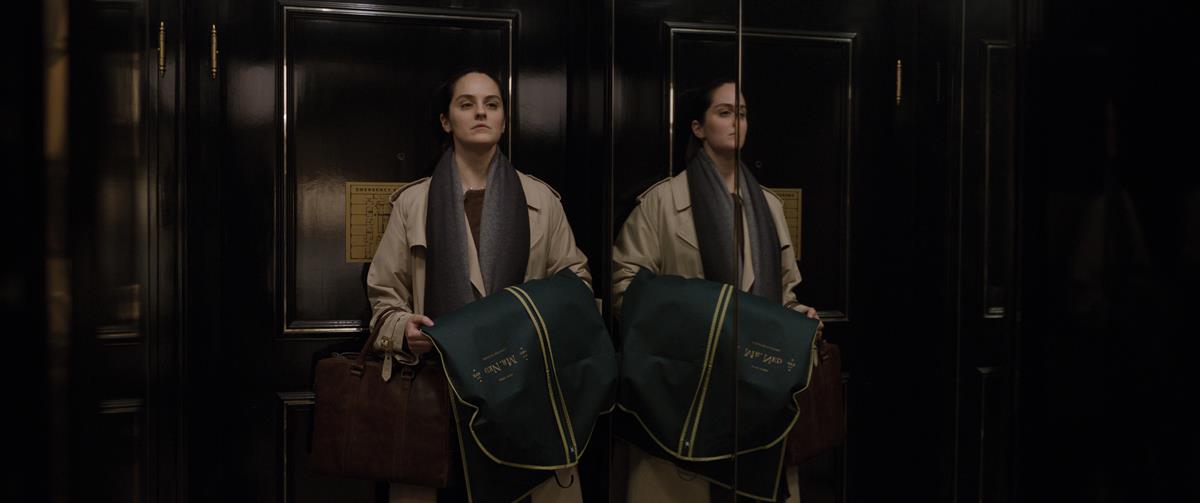
In his review of the film for The Atlantic, culture writer David Sims says Tár is Cate Blanchett’s best performance of her career, breaking down an icon’s fall from grace to its most elemental form.
“Tár’s ‘cancellation’ (which is simply the easiest way to describe what happens to her reputation in the film) has its specifics, but Field seems most interested in the elemental process of watching someone with such power and poise veer out of control,” he writes. “The unraveling of Tár begins with just a few whispers before spiraling in unpredictable directions. Field isn’t exactly rooting for her downfall, and neither was I; instead, he’s depicting the way such scandals inspire rubbernecking from all walks of life.”
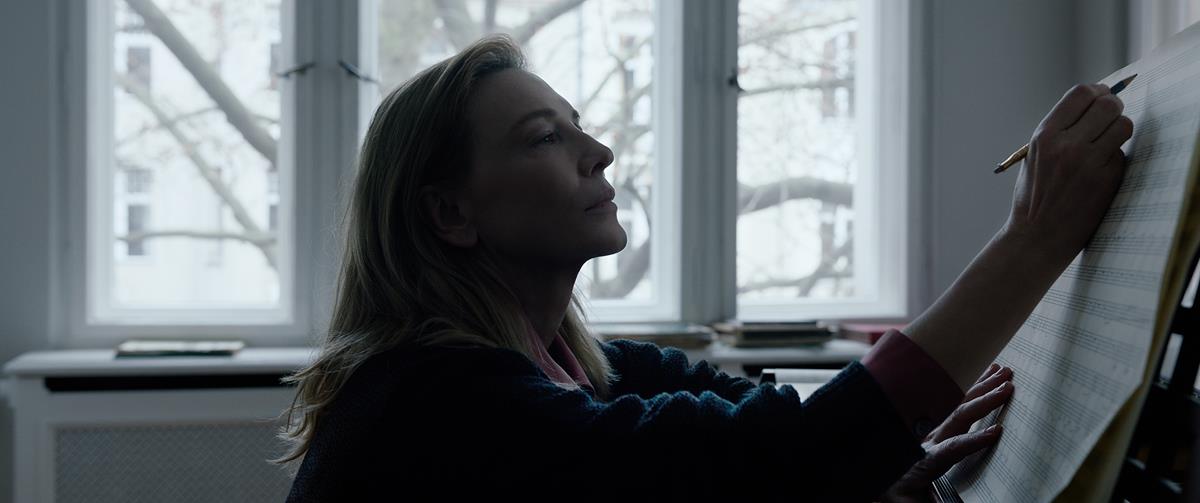
Sims, noting that Field played the “furtive piano player Nick Nightingale” in Eyes Wide Shut and had close ties with Kubrick, says “Tár is worthy of comparison to that great master’s work. Every visual composition is meticulously arranged, and every surreal twist of imagery feels nuanced and earned.
“But most important, the world around Tár seems real and tangible, so when it slips into chaos, the viewer becomes as overwhelmed as the protagonist. Field understands that for the stakes of this insular story of one fictional celebrity’s reputation to matter, Tár’s manifold scandals can’t be easy to evaluate. She’s not a clear-cut monster or a martyr being railroaded by a system of prudes. Blanchett and Field make her as complicated as the art she loves and respects, even as love and respect become the emotions she struggles most to wield and receive.”
READ MORE: Tár Takes on the Devastating Spectacle of ‘Cancellation’ (The Atlantic)
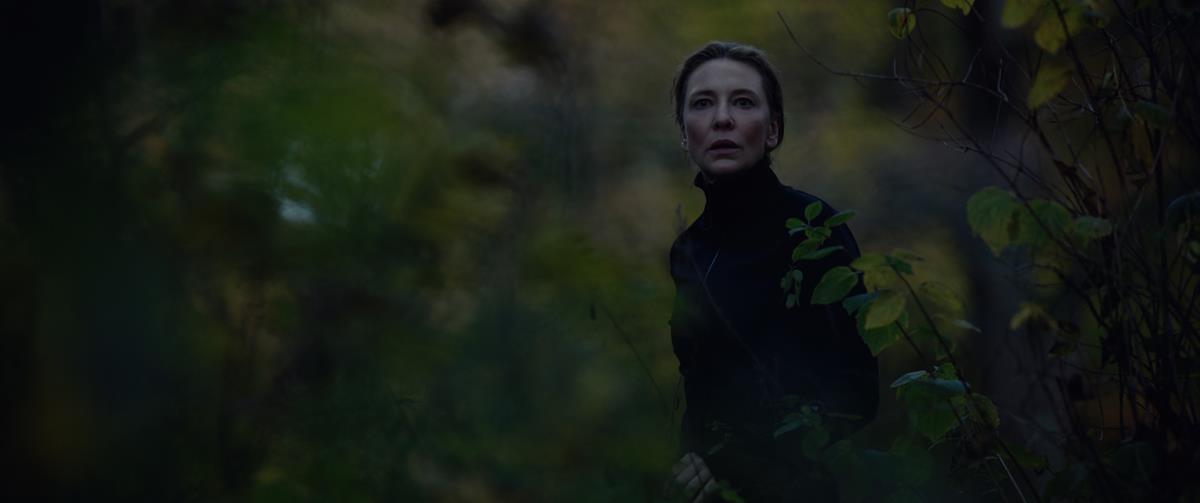
Variety chief film critic Owen Gleiberman says Tár takes Field to an entirely new level as a filmmaker. “The movie is breathtaking — in its drama, its high-crafted innovation, its vision,” he lauds. “It’s a ruthless but intimate tale of art, lust, obsession, and power. It’s set in the contemporary classical-music world, and if that sounds a bit high-toned (it is, in a good way), the movie leads us through that world in a manner that’s so rigorously precise and authentic and detailed that it generates the immersion of a thriller.”
Gleiberman also appreciates Hoffmeister’s camera work, noting that Tár “looks like a documentary directed by Stanley Kubrick…. The compositions are naturalistic in an imposing, ice-cool way, and what they express is the casual calculation with which Lydia monitors every facet of her existence.”
READ MORE: ‘Tár’ Review: Cate Blanchett Acts With Ferocious Force in Todd Field’s Masterful Drama About a Celebrity Conductor (Variety)
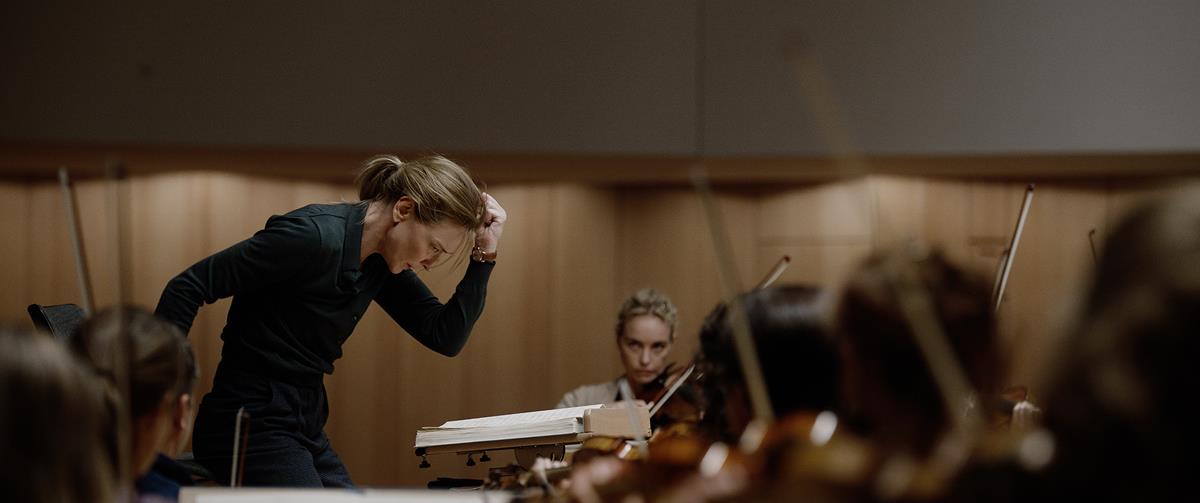
Filmmaker Magazine’s Vadim Rizov argues, “If Tár is an anti-cancel culture/#MeToo film — and I believe that it ultimately is, no matter how much situational ambiguity is deliberately baked in to cover its tracks) — it comes by the contextual specifics of its test case honestly.”
But Rizov takes exception with the cinematography, noting that “Technically, Field errs on the side of master shot simplicity, moving the camera rarely and always with purpose; it’s not a super-formalist film, instead a calmly competent one.”
He describes the first hour of the film as a “barrage of back-to-back dialogues” that is “impressively airless,” before veering off into nearly supernatural and/or horror territory with “doom-y dollies into an ominously ticking metronome, an unseen woman screaming in a forest.”
Rizov also picks up on an important cinematic reference Field employs: “Rehearsing Mahler gives the film an excuse to namecheck Visconti, a connotational reminder of his use of the composer’s fifth symphony’s “Adagietto” in Death in Venice — this isn’t nearly as self-consciously or successfully operatic, but it’s a nice aspirational reference point. And, since Death in Venice focuses on what we could label an ‘age-inappropriate’ relationship, its invocation also echoes Tár’s thornier larger question, which is basically yet another round of ‘Can you separate the artist from the art, and should you?’ ”
READ MORE: Venice Film Festival 2022: TÁR (Filmmaker Magazine)
The New Yorker film critic Anthony Lane also weighs in, praising Blanchett for her “imperious and incandescent” performance as Lydia Tár.
“When we first meet Lydia, she’s about to be interviewed onstage, in New York, by my colleague Adam Gopnik, who is persuasively played, in an audacious stroke of casting, by himself,” Lane quips with his characteristic wit. Seriously, isn’t it high time for the Motion Picture Academy to begin recognizing casting directors for their craft?
Lane neatly summarizes Lydia’s reckoning:
“Through glimpses of e-mails, passing chatter, and scraps of dreams, we learn of a young trainee conductor who was fixated on Lydia (or was it vice versa?), and whose career Lydia has since attempted to block. There are hints of a pattern — of other young women who have slipped under Lydia’s spell and suffered accordingly. Her personal assistant, Francesca (Noémie Merlant), is a guarded and dedicated soul, who receives scant reward for her devotions; was she, too, once an object of Lydia’s interest? Rumors abound, a legal deposition is required, and Lydia is Tárred and feathered on social media. When she travels to New York, in the company of a Russian cellist, Olga (Sophie Kauer), we see a snap of them, on Twitter, plus the tagline ‘TÁR’s fresh meat.’ ”
READ MORE: Cate Blanchett Is Imperious and Incandescent in “Tár” (The New Yorker)
WATCH THIS: Todd Field, Cate Blanchett, Nina Hoss & Hildur Guonadóttir on TÁR | NYFF60
Watch director Todd Field, cast members Cate Blanchett, Nina Hoss, and Sophie Kauer, and composer Hildur Guonadóttir discuss Tár at the 60th New York Film Festival in a conversation moderated by NYFF artistic director Dennis Lim:

